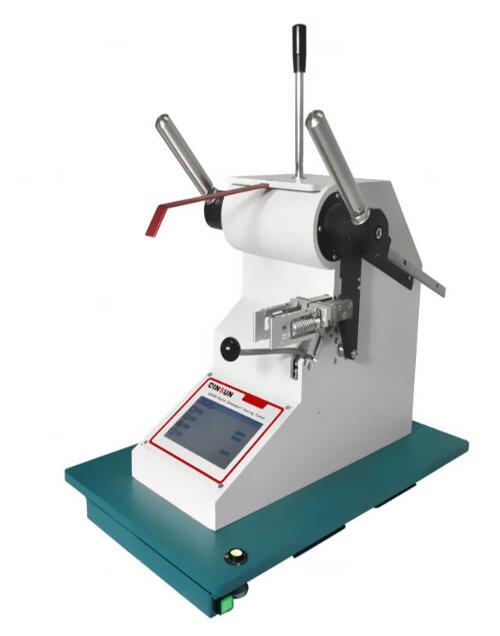-
Top Tearing Tester: A Comprehensive Guide
Edited by:Read:The top tearing tester is a device used to test the tear strength of materials. They are widely used for different types of materials such as packaging, paper, plastic, and fabric to determine their suitability for use in scenarios.
The following is a comprehensive guide to the top tearing tester:
1. Test speed: Test speed is usually the rate at which a sample is stretched per minute, and can typically range from 10mm/min to 2000mm/min. Typically, the faster the test speed, the faster the test data, but it can also affect the accuracy and repeatability of the tear strength.

2. Sample fixture: There are usually two types of sample fixtures: tensile and flat. In a tensile fixture, one end of the sample is clamped and the other end is held in place by rollers or telescopic arms. In a flat plate fixture, the sample is taped between two steel plates, which are subsequently clamped in the fixture. When selecting a sample fixture, the size and shape of the sample must be considered, as well as the stability and accuracy required for testing.
3. Data analysis: Most testers provide software programs for calculating tear strength and tear energy, which can help the user to obtain test results quickly and accurately. In addition, the data should be exportable for other forms of analysis.
4. Accuracy and repeatability: The accuracy and repeatability of the test instrument is very important for testing the properties of the material. When selecting a test instrument, its testing accuracy, repeatability, and covers the range of testing errors should be taken into account.
5. Standards compliance: The best choice is to use test instruments that comply with international standards. Depending on the type of product or market demand, instruments that meet the appropriate international standards should be considered.
6. Price and reliability: The quality of the test instrument is directly proportional to the price, but the price also does not always prove the quality. Therefore, users need to consult the opinions and experiences of other users and reviewers to understand the performance, reliability and price of the selected test instrument.
In summary, the top tearing tester should have the features of test speed, sample fixture, data analysis, accuracy and repeatability, standards compliance, price, and reliability. These features are important for accurate and repeatable testing in product development, production and quality control processes.
- 2024-04-19Paper ring compression strength tester standards
- 2024-04-19Cupping tester standards
- 2024-04-19Rubber and plastic tensile tester standards
- 2024-04-19Taber 1750 wear-resistant tester standards
- 2024-04-19Stone Chip Resistance Gravelometer standards
- 2024-04-18Diaper absorption speed tester standards
- 2024-04-18Diaper leakage tester technical indicators
- 2024-04-18Paint film impact resistance tester standards
- 2024-04-18Low temperature brittleness tester principle
- 2024-04-18Battery separator permeability tester technical indicators



